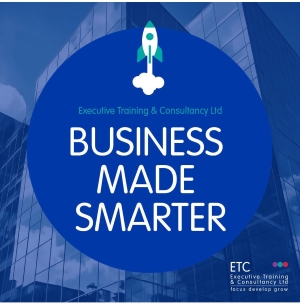In today’s fast-paced business world, understanding your customers isn’t just a nice-to-have—it’s essential. Knowing who your customers are and how to communicate with them effectively can mean the difference between thriving and merely surviving.
Customer segmentation remains one of the most powerful tools for businesses to tailor their marketing, boost loyalty, and drive conversions. Let’s explore how this strategy has evolved and why it’s more relevant than ever in 2025.
Why Customer Segmentation Matters More Than Ever
Think about the people in your life—family, friends, colleagues, and acquaintances. You wouldn’t speak to them all in the same way, would you? The same principle applies to your customers. Different groups have unique needs, expectations, and communication preferences.
For example, a customer spending £1 million with your business will expect a different level of service compared to someone spending £100. The secret to maintaining successful relationships with all your customer types lies in understanding their uniqueness and exceeding their expectations.
However, treating every customer individually can be time-consuming and costly. That’s where customer segmentation comes in—a strategy that allows you to group customers with similar characteristics and communicate with them efficiently and effectively.
What is Customer Segmentation?
Customer segmentation is the process of grouping customers (and potential customers) based on shared traits or behaviours. These groups could be defined by:
- Geography: Where they live or work.
- Demographics: Age, gender, occupation, or income level.
- Behaviour: Loyalty, buying habits, or readiness to purchase.
If you’ve already created a customer avatar—a detailed profile of your ideal customer—segmentation takes this a step further by linking similar customer types together into manageable groups.
How Segmentation Drives Success in 2025
Segmenting your audience allows you to personalise your marketing efforts and connect with customers on a deeper level. Here’s why it’s so impactful:
- Tailored Communication: By speaking directly to each segment’s needs, you increase engagement and build trust.
- Improved Loyalty: Customers are more likely to return when they feel understood and valued.
- Higher Conversions: Personalised messaging leads to better results than generic campaigns.
For instance, let’s revisit the example of a flower company from our earlier discussions:
- Customer A: Buys flowers occasionally to show appreciation or sympathy (e.g., Valentine’s Day).
- Customer B: Regularly purchases flowers for personal enjoyment or home décor.
By segmenting these two groups, you can send targeted offers—like Valentine’s Day promotions for Customer A and subscription discounts for Customer B—maximising the likelihood of repeat purchases.
How Small Businesses Can Leverage Segmentation
For small businesses, segmentation might seem like an overwhelming task—but it doesn’t have to be! With today’s technology, segmentation is easier than ever and can deliver incredible results without requiring massive resources.
Email Marketing Made Simple
Platforms like Go High Level, MailChimp and Active Campaign allow you to create segmented email lists effortlessly. You can even design one email template that dynamically changes based on the recipient’s segment—giving the appearance of personalised communication without extra effort.
This approach pays off: personalised emails can increase open rates by up to 203%, while marketers using segmented campaigns report revenue increases as high as 760%.
Smarter Advertising
Paid advertising platforms like Facebook and LinkedIn enable hyper-targeted campaigns based on detailed audience data. By narrowing down your audience with segmentation insights, you’ll spend less money while achieving better results.
Segmentation in Action: Real-Life Examples
Big brands like Tesco have mastered segmentation through loyalty schemes. Every time you shop with them; they collect data on your preferences. When your favourite products go on sale, Tesco sends you personalised offers—making it more likely that you’ll return.
Small businesses can replicate this success on a smaller scale by using tools like CRM systems or email marketing platforms to track customer preferences and deliver tailored communications.
How ETC Can Help You Stay Ahead
If you’re unsure where to start or need help refining your customer segmentation strategy, ETC is here for you! We specialise in helping businesses identify their target audiences and group them into meaningful segments that drive growth.
As part of our commitment to supporting small businesses, we offer a free new business review. In just two hours, we’ll provide expert coaching and leave you with actionable steps that you can implement immediately.
Don’t let outdated practices hold your business back—embrace the power of segmentation today and watch your profits soar!





